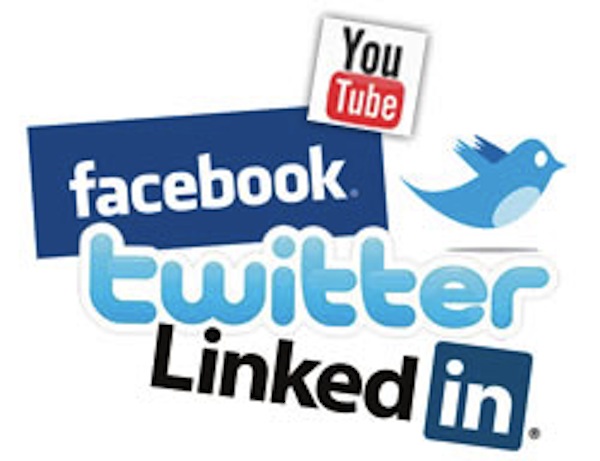
![]() Social media is changing not only how brands and publishers market to consumers, but it is also changing the way that they operate altogether. This is the second article of an eight-part series dubbed “The Social Operating System,” which explores how advertisers, agencies and publishers are leveraging social media to build audience and engagement. The series is made possible through the sponsorship of Vitrue, a provider of social media management services.
Social media is changing not only how brands and publishers market to consumers, but it is also changing the way that they operate altogether. This is the second article of an eight-part series dubbed “The Social Operating System,” which explores how advertisers, agencies and publishers are leveraging social media to build audience and engagement. The series is made possible through the sponsorship of Vitrue, a provider of social media management services.
As social media grows up, the relationships between brands and their agencies around it are changing as well. Marketers are investing more in the channel from both a budget and a resource perspective and are, as a result, often looking to their agency partners to play more of a strategic role than a hands-on day-to-day one.
Many large brands now have their own in-house teams that handle their social accounts and activities, for example, and are looking to their agency partners to help dictate how those teams are used. For agencies, social is becoming less about the day-to-day operations of manning accounts and publishing content, and more about formulating long-term strategies and fixing business problems.
“Our relationships with clients are changing in that more want us to play an almost consultative role,” said Noah Mallin, vp and group director of social media at Digitas. “Clients look after varying aspects of social themselves now. We find more and more that they’re coming to us with business challenges. It’s not the old ‘we need a Facebook page because our competitor has one.’ It’s things like, ‘we’re concerned because our industry is being disrupted, is there a way to use social to fix this business problem?’”
Peter Kim, chief strategy officer at DachisGroup, expressed similar views, drawing comparisons between brands’ early approaches to e-commerce and CRM. Initially, many brands used third parties to take care of those functions, until it made sense financially to bring them in-house. Social could play out in a similar way, he suggested, meaning agencies will need to adapt their offerings and value propositions to their clients.
“I think in the short-term you can use agencies and outside help to get up to speed and rapidly grow your capabilities, but over the long term it’s going to be more cost effective to internatilize those functions,” he said, adding that the opportunity for agencies will likely be around services such as the collection and interpretation of data, and the creation of insights and strategies based on it.
As Mallin put it, “the opportunity for agencies is to step back and think more about how social can be transformative for a client’s business. The agencies that do that are the ones that’ll survive in this area.”
But despite that agency view, some brands remain more comfortable doing things the other way round: Driving the strategy themselves and outsourcing the legwork to third parties.
Nissan, for example, will formulate strategy and messaging in-house and then pass it off to its agencies to implement. “I may not be an expert storyteller when it comes to 30-second TV commercials, but I would argue I am as much of an expert about my brand as an agency is from a social perspective,” said Erich Marx, the company’s director of interactive and social media marketing for the U.S.
That type of approach is rapidly becoming outdated, though, according to Banyan Branch President Blake Cahill. “Initially, most marketers and agencies thought of social as a check-the-box channel, but it’s transformed into a massive one, as well as a place that needs a lot of care and feeding. It’s different to the way marketers have worked in the past.”
But Marx, too, acknowledged that the social space is changing, and that the way the brand approaches it might have to, as well. The one hurdle, though, remains the ability to measure tangible ROI from social efforts.
“It’s playing an increasingly important role for us. It’s still a bit of an experiment, and it’s still early on, but we are big believers in its long-term potential. As the ROI piece becomes more defined, the company will put more resources there,” Marx said, in reference to in-house capabilities.
Marx added that Nissan is becoming increasingly interested in the potential of social media for things like research and customer service, as well as product development and branding further down the line.
It’s that type of brand need that both Mallin and Kim suggested agencies should attempt to tap into.
“It’s about finding the business opportunity,” Mallin said. “It can expand into something beyond just marketing and have an effect right down to how a company is structured.
More in Marketing

Why the New York Times is forging connections with gamers as it diversifies its audience
The New York Times is not becoming a gaming company. But as it continues to diversify its editorial offerings for the digital era, the Times has embraced puzzle gamers as one of its core captive audiences, and it is taking ample advantage of its advantageous positioning in the space in 2024.

Why B2B marketers are advertising more like consumer brands to break through a crowded marketplace
Today’s marketing landscape is more fragmented than ever. Like consumer brands, business brands are looking to stand out in a crowded and competitive marketplace, making marketing tactics like streaming ads, influencers and humorous spots more appealing.

As draft puts WNBA in spotlight, the NBA is speeding up ballplayers’ transition to creators
The NBA’s star athletes are its greatest marketing asset.





